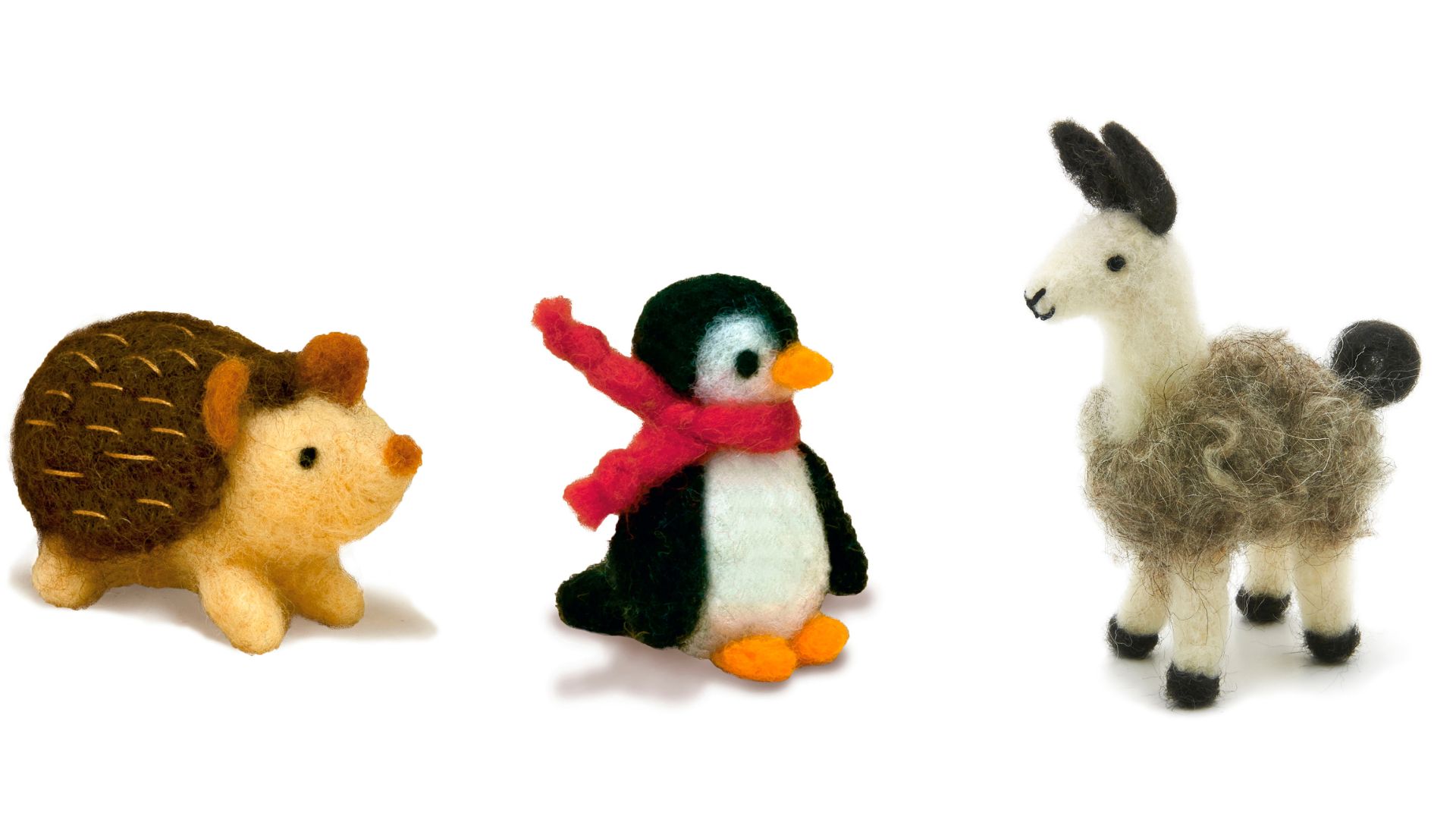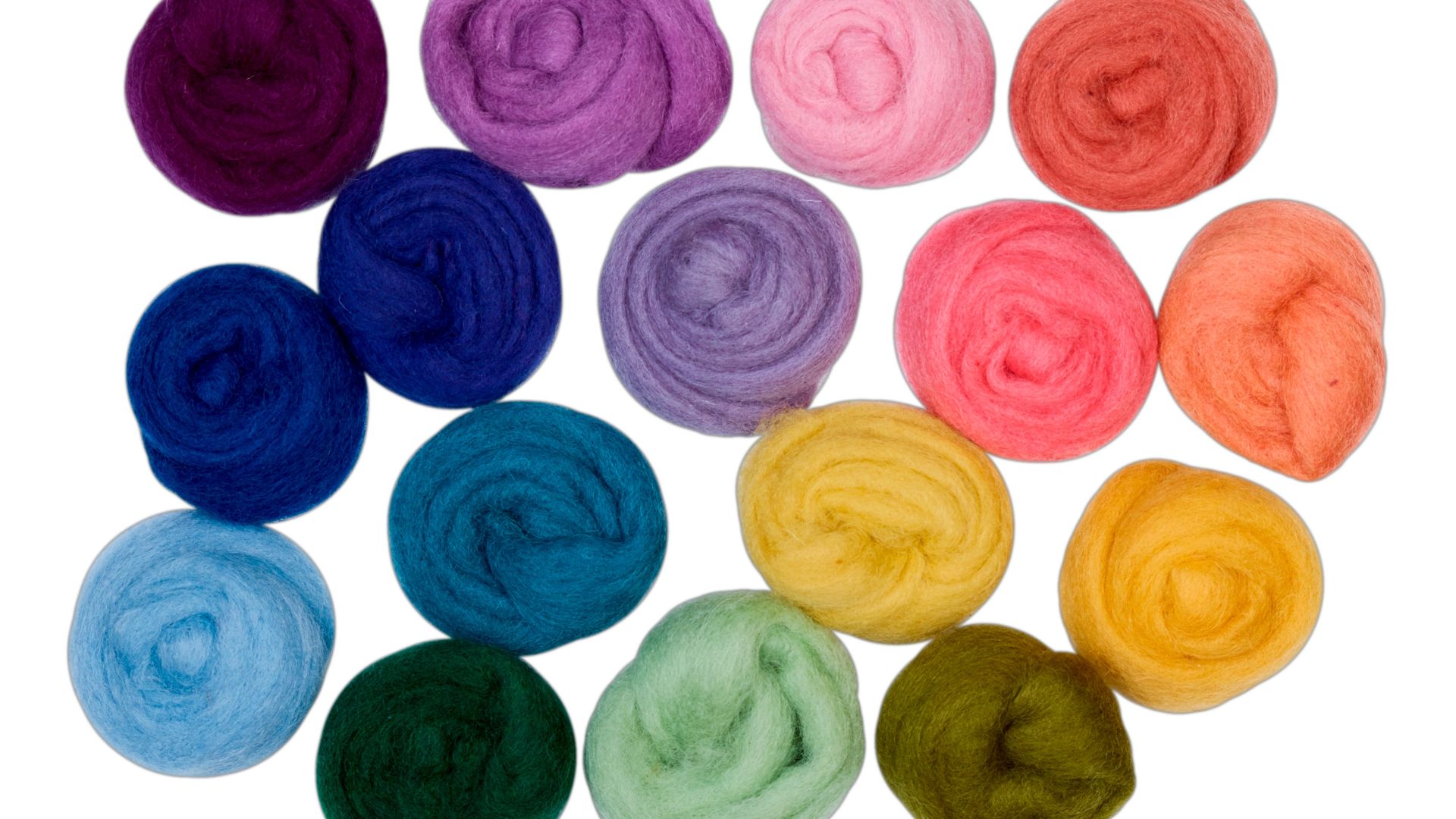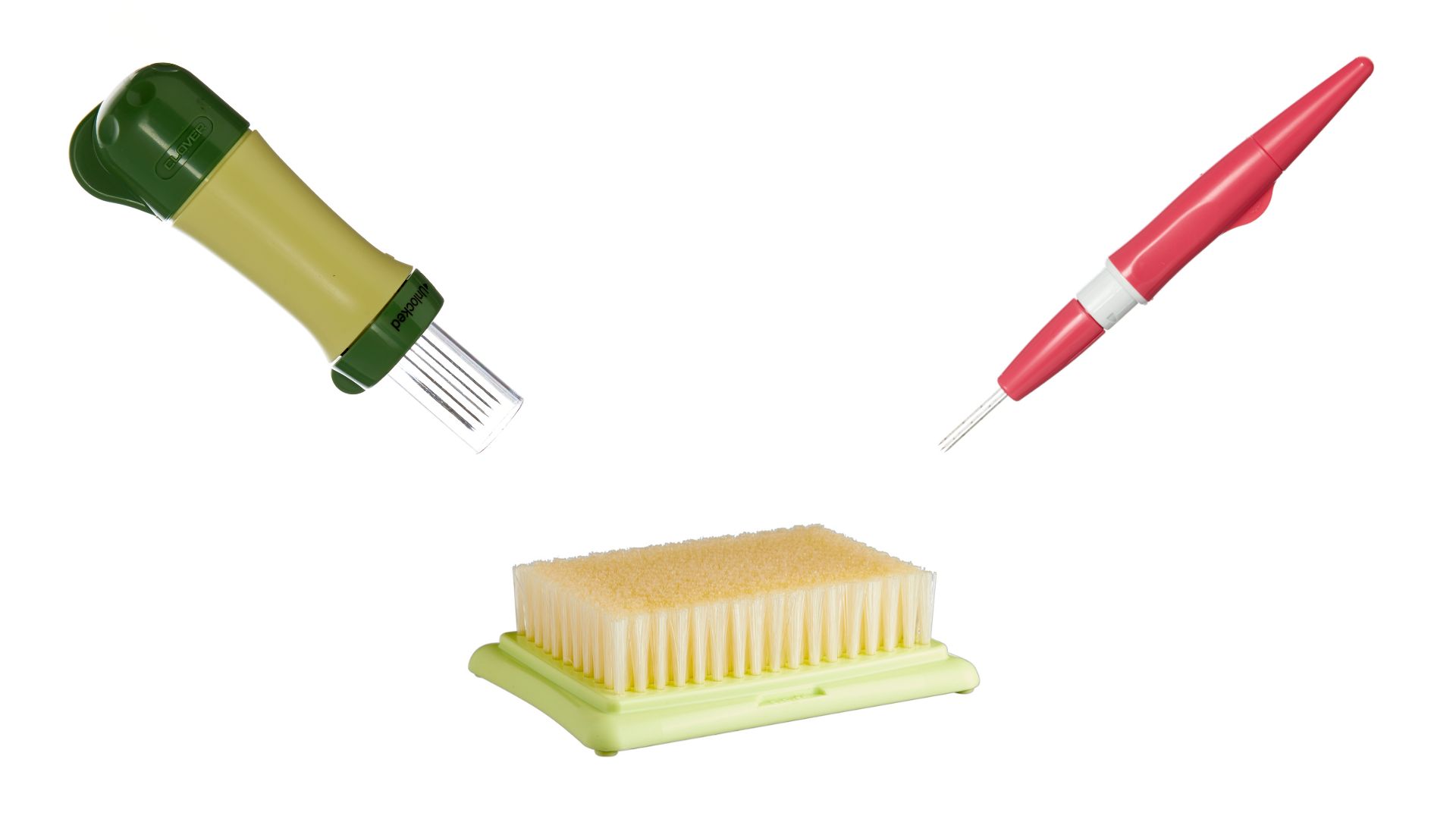 | ||
| Your browser is not supported. | ||
|
Please browse our site using any of the following options:
| ||
5 Reasons To Start Needle Felting

Are you looking for a new craft hobby that's easy to learn and fun to do? Then it's time for you to try needle felting, a simple but satisfying craft that anyone can enjoy! At Spotlight we have everything you need to start needle felting, including needles and needle holders, felting mats and heaps of gorgeous wool roving in a range of beautiful colours.
In this blog we'll aim to answer some of the most commonly asked questions about needle felting, as well as showcasing five reasons we think you'll love this amazing needle art craft and a few fun ideas for you to try!
Quick Links
- What Is Felting And What Do You Need For It?
- Needle Felting Is Easy To Learn
- Needle Felting Is Satisfying To Do
- Needle Felted Crafts Make Great Gifts
- Needle Felting Is Not An Expensive Hobby
- You Can Change The Way You Felt With Felting Accessories
- Needle Felting Ideas
What Is Felting And What Do You Need For It?
You may be wondering 'What is needle felting?', as the name doesn't make it clear exactly how this craft hobby functions. Needle felting works by using a barbed needle to agitate the fibres of wool roving - but what is wool roving exactly?
When we ask 'What is felting wool', we are referring to wool that has been cleaned and combed into a fluffy ball. As the wool is agitated it becomes coarser and denser, compacting into a firm ball that you can manipulate into almost any shape.
This is also known as dry needle felting, as opposed to wet felting which uses water and soap to combine the fibres. Dry needle felting is a less messy option, and one you can easily do on your lap while you relax!
You can make everything from simple shapes to life-size, realistic animals using needle felting, and best of all, you don't need any expensive or hard-to-use equipment to start.
Here is what you need for needle felting:
- Wool roving: This is wool that has been washed and combed out in one direction to create a long, fluffy length of wool. It can be dyed at this point or left in its natural colour. You can buy individual balls of wool roving, themed packs around a certain colour or comprehensive wool roving kits that contain a rainbow of shades for you to use!
- Barbed needles: The needles used for needle felting are long, thin and sharp, with a small rounded hook at the end. But the stand-out feature of these needles is the small 'barbs' along its length. These small nicks in the needle are what catch the wool fibres as you felt, fluffing up each strand and matting them together.
- Felting mat: Your felting mat is what you rest the wool roving on as you push your felting needle in and out. Felting mats can be a simple foam or wool block, or a brush block with its bristles facing up towards you as you work. Felting mats prevent your needle from going through the wool and striking your workbench, and they also help keep the wool roving in place as you work.
Not much, is it? All you need to start needle fleeting is a needle, a ball of wool and a felting mat! Needle felting for beginners is easy, as there are many felting kits that provide everything you need to start in one handy pack.
1. Needle Felting Is Easy To Learn
One of the best things about needle felting for beginners is how easy it is to learn. Learning how to do needle felting isn't hard at all, and most needle felting tools and kits will have some instructions you can follow to get started. Needle felting doesn't include any complicated weaving or fiddly instructions - all you're doing is stabbing your wool into shape.
If you want to make a specific animal or shape, you can probably find a needle felting kit for it. These kits will include the wool colours you need as well as instructions for how to create the shape - these kits are great for beginners, as not only do they make it super easy to create a more advanced-looking felted shape, but you'll learn some useful felting techniques while you're at it.
Because of the repeated movements you'll be making as you felt, beginner needle felters will quickly become practised at the basics of needle felting. Felting isn't a quick craft - creating complicated shapes can take hours - but it also doesn't always require focused concentration, making it ideal for keeping your hands busy while you watch TV or listen to a podcast.
2. Needle Felting Is Satisfying To Do
Whether you're frustrated after a hard day of work or restless after a long day or school, needle felting is the perfect hobby to help you relieve your stress and any pent-up energy. The act of stabbing the needle into your wool roving is quite satisfying, and the rhythmic action will also help your mind relax as you work.
Watching your felt shapes come together is a joy, especially when you start attaching them to make more complicated figures. Turing balls of wool into some adorable needle-felting animals is an amazing process and one you'll definitely appreciate after many hours of felting!

3. Needle Felted Crafts Make Great Gifts
If you love needle felting animals, you'll be happy to hear they also make great gifts for friends and family members. An adorable felted critter or figure can make a heartfelt gift for many, and the recipient will be sure to appreciate the hard work you've put into creating your felted animal.
Needle felting gift ideas include a small angel for a first communion, a teddy for a baptism, your best friend's favourite movie character or a mini version of your mum's cat - with their soft, squishy feel and cute design, needle felted gifts are a fun and affordable way to show your loved ones you care!
4. Needle Felting Is Not An Expensive Hobby
One of the reasons we love needle felting for beginners is that you don't need any expensive tools, supplies or accessories to start needle felting - just your wool, a needle and a mat. None of these supplies are expensive and, if you happen to break a needle or wear down your foam mat, replacements are cheap and easy to find (especially at your local Spotlight store!).
If you really want to save money, you can buy your own uncarded fleece and then brush it out with a carding brush. This will remove any dirt or plant matter from the wool and pull the fibres out into the long, soft lengths you'd find in a ready-to-use carded ball. If you choose to card your own wool, you can also brush different colours together to create wool roving that has a gradient colour, or is an even mix of multiple hues.
5. You Can Change The Way You Felt With Felting Accessories
There are plenty of handy accessories out there you can use to make the felting process quicker or easier if you need. These include:
- Finger protectors: The small, thimble-like finger covers will give you peace of mind when you felt, as they protect your fingers from being stabbed by an errant felting needle. They are usually made from soft leather and fit snugly on your thumb and forefinger.
- Needle holders: These handles can fit single or multiple felting needles into them, giving you a surface that is larger and easier to hold for long periods of time. Using a holder with multiple needles in it will help you felt wool faster, while single needles are better for detail work.
- Armature wire: If you are creating a larger felted animal with multiple limbs, armature wire is a great way to help give your animal structure and keep it in shape. Acting as the 'skeleton', you can wrap wool roving surround armature before you start to felt it to assist you in creating the perfect shape. It's particularly handy for animals with long necks and tails.
- Electric felting tools: These needle holders are powered to move the needle in and out of the wool for you, and most will hold more than one needle. They are useful for felting a flat shape quickly but aren't recommended for beginners or if you need to drive your needle into a very thick shape.
Needle Felting Ideas
Have we convinced you to start needle felting? Here are some ideas perfect for needle felting beginners to try:
- Felted hearts: A step up from a simple felted ball, felted hearts are a sweet way to practice making shapes - plus they look great scattered across just about any surface! Forming a point at one end and a dip at the other is all you need to do to make a felt heart, and it only requires a single needle to make.
- Felted sheep: When it comes to needle-felting animals, sheep are one of the best ones to start with. A simple oval for the body, a little round head and four legs are all you need to make, and because we're using sheep's wool roving to make it, your little sheep will have a very realistic texture!
- Felted round animals: For an easy animal shape that's also super cute, look for round animals you can make out of a sphere. Baby seals, pigs, chicks, owls and hamsters are perfect, as they can be made from a sphere with small additions like ears, noses and tails that are all easy to make.
- Felted pumpkin: For a festive decoration perfect for Halloween or even Christmas, try making a felted pumpkin! You'll start with a simple sphere, but you can use your needle to add the vertical ridges typical of most pumpkins. Attach a stalk to the top and you're done!
Need more needle felting ideas? Look to your own pets, your favourite snacks or even your garden for some real-life inspiration!

Discover Beautiful Needle Felting Supplies At Spotlight
Ready to start needle felting? You can find all the needle felting supplies you need online at Spotlight - pay your way and we'll deliver them straight to your front door. Otherwise, visit your nearest Spotlight store and our friendly team will help you find the right felting supplies for your next project.
For more information on needle felting and other fun crafts, read through our buying guides on felting and embroidery, needles and hooks and yarn. And for more crafty ideas and inspiration, check out our blogs on how to make a quilt from start to finish, our guide to pottery making and how to make a pom pom in four different ways.




